An Unusual Case of Erdheim Chester Disease (ECD) with Knee Pain: A Case Report
Abstract
1. Background
2. Case Presentation
3. Discussion
4. Conclusions
Author Contributions
Funding
Institutional Review Board Statement
Informed Consent Statement
Data Availability Statement
Acknowledgments
Conflicts of Interest
Abbreviations
References
- Chester, W. Über Lipoidgranulomatose. Virchows Arch. Pathol. Anat. Physiol. Klin. Med. 1930, 279, 561–602. [Google Scholar] [CrossRef]
- Veyssier-Belot, C.; Cacoub, P.; Caparros-Lefebvre, D.; Wechsler, J.; Brun, B.; Remy, M.; Wallaert, B.; Petit, H.; Grimaldi, A.; Wechsler, B.; et al. Erdheim-Chester disease clinical and radiologic characteristics of 59 cases. Medicine 1996, 75, 157–169. [Google Scholar] [CrossRef] [PubMed]
- Lee, J.H.; Jung, S.T.; Choi, Y.D. Erdheim Chester disease (ECD): A case report. J. Korean Bone Jt. Tumor Soc. 2013, 19, 28–32. [Google Scholar] [CrossRef]
- Lim, J.; Kim, K.H.; Suh, K.J.; Yoh, K.A.; Moon, J.Y.; Kim, J.E.; Roh, E.Y.; Choi, I.S.; Kim, J.S.; Park, J.H. A unique case of Erdheim-Chester disease with axial skeleton, lymph node, and bone marrow involvement. Cancer Res. Treat. Off. J. Korean Cancer Assoc. 2016, 48, 415–421. [Google Scholar] [CrossRef] [PubMed]
- Park, Y.K.; Ryu, K.N.; Huh, B.; Kim, J.D. Erdheim-Chester disease: A case report. J. Korean Med. Sci. 1999, 14, 323–326. [Google Scholar] [CrossRef] [PubMed]
- Lachenal, F.; Cotton, F.; Desmurs-Clavel, H.; Haroche, J.; Taillia, H.; Magy, N.; Hamidou, M.; Salvatierra, J.; Piette, J.C.; Vital-Durand, D.; et al. Neurological manifestations and neuroradiological presentation of Erdheim-Chester disease: Report of 6 cases and systematic review of the literature. J. Neurol. 2006, 253, 1267–1277. [Google Scholar] [CrossRef] [PubMed]
- Julien, H.; Zahir, A.; Elisabeth, D.; Bertrand, W.; Nathalie, C.-C.; Patrice, C.; Richard, I.; Thierry, G.; Janine, W.; Nina, W.; et al. Cardiovascular involvement, an overlooked feature of Erdheim-Chester disease: Report of 6 new cases and a literature review. Medicine 2004, 83, 371–392. [Google Scholar]
- Cavalli, G.; Guglielmi, B.; Berti, A.; Campochiaro, C.; Sabbadini, M.G.; Dagna, L. The multifaceted clinical presentations and manifestations of Erdheim-Chester disease: Comprehensive review of the literature and of 10 new cases. Ann. Rheum. Dis. 2013, 72, 1691–1695. [Google Scholar] [CrossRef] [PubMed]
- Jridi, M.; Ben Achour, T.; Naceur, I.; Smiti, M.; Ben Ghorbel, I.; Lamloum, M.; Said, F.; Houman, M.H. Erdheim-Chester Disease: A Multisystem Disease Case Illustration with Rare Manifestations and Treatment Challenges. Clin. Case Rep. 2023, 11, e6996. [Google Scholar] [CrossRef] [PubMed]
- Resnick, D.; Greenway, G.; Genant, H.; Brower, A.; Haghighi, P.; Emmett, M. Erdheim-Chester disease. Radiology 1982, 142, 289–295. [Google Scholar] [CrossRef] [PubMed]
- Atkins, H.L.; Klopper, J.F.; Ansari, A.N.; Iwai, J. Lipid (cholesterol) granulomatosis (Chester-Erdheim disease) and congenital megacalices. Clin. Nucl. Med. 1978, 3, 324–327. [Google Scholar] [CrossRef] [PubMed]
- Schmidt, H.H.; Gregg, R.E.; Shamburek, R.; Brewer, B.H., Jr.; Zech, L.A. Erdheim-Chester disease: Low low-density lipoprotein levels due to rapid catabolism. Metabolism 1997, 46, 1215–1219. [Google Scholar] [CrossRef] [PubMed]
- Boissel, N.; Wechsler, B.; Leblond, V. Treatment of refractory Erdheim-Chester disease with double autologous hematopoietic stem-cell transplantation. Ann. Intern. Med. 2001, 135, 844–845. [Google Scholar] [CrossRef] [PubMed]
- Mazor, R.D.; Manevich-Mazor, M.; Shoenfeld, Y. Erdheim-Chester disease: A comprehensive review of the literature. Orphanet J. Rare Dis. 2013, 8, 137. [Google Scholar] [CrossRef] [PubMed]
- Haroche, J.; Amoura, Z.; Charlotte, F.; Salvatierra, J.; Wechsler, B.; Graux, C.; Brousse, N.; Piette, J.-C. Imatinib mesylate for platelet-derived growth factor receptor-beta-positive Erdheim-Chester histiocytosis. Blood 2008, 111, 5413–5415. [Google Scholar] [CrossRef] [PubMed]
- Haroche, J.; Cohen-Aubart, F.; Emile, J.-F.; Arnaud, L.; Maksud, P.; Charlotte, F.; Cluzel, P.; Drier, A.; Hervier, B.; Benameur, N.; et al. Dramatic efficacy of vemurafenib in both multisystemic and refractory Erdheim-Chester disease and Langerhans cell histiocytosis harboring the BRAF V600E mutation. Blood 2013, 121, 1495–1500. [Google Scholar] [CrossRef] [PubMed]
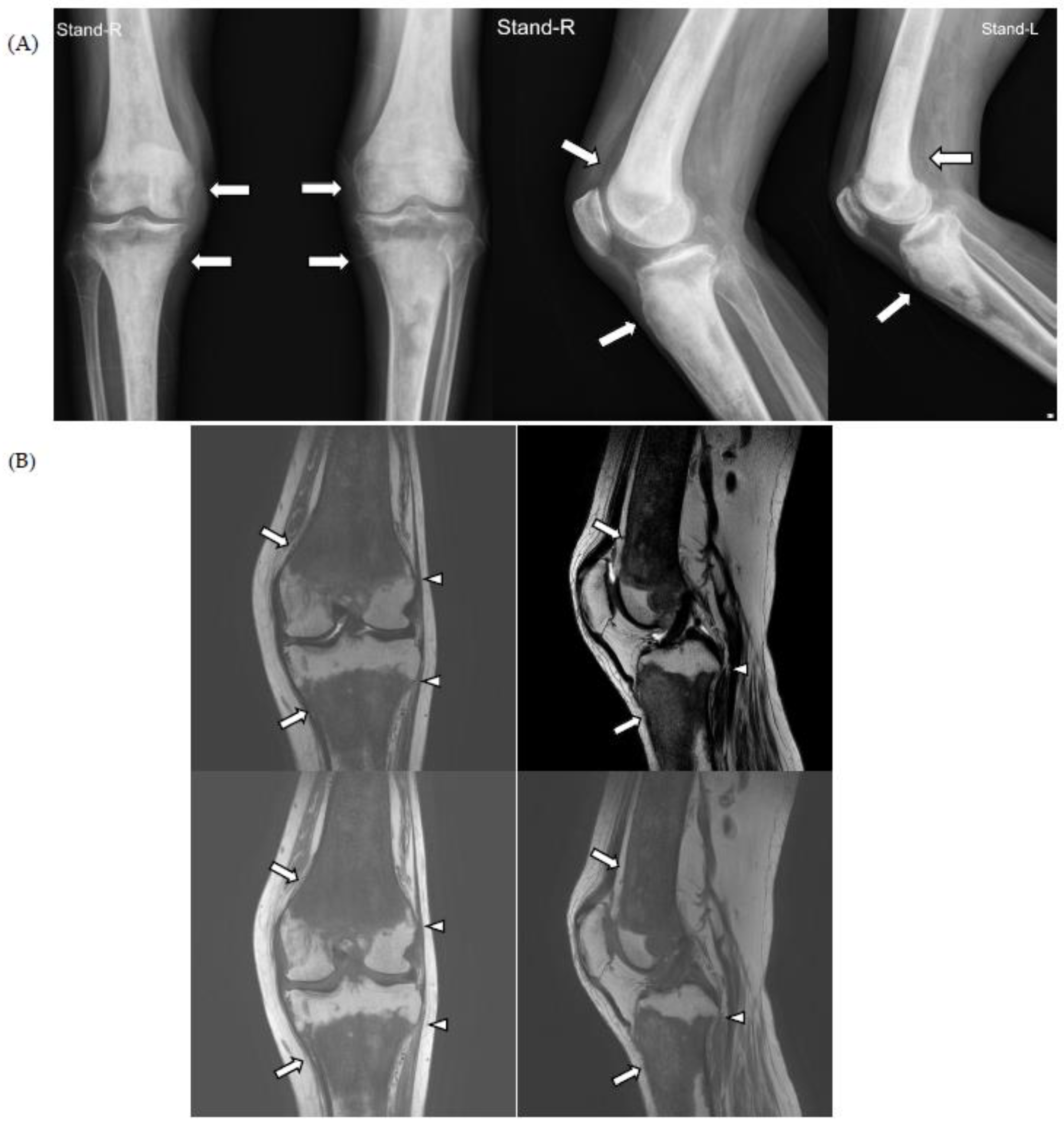
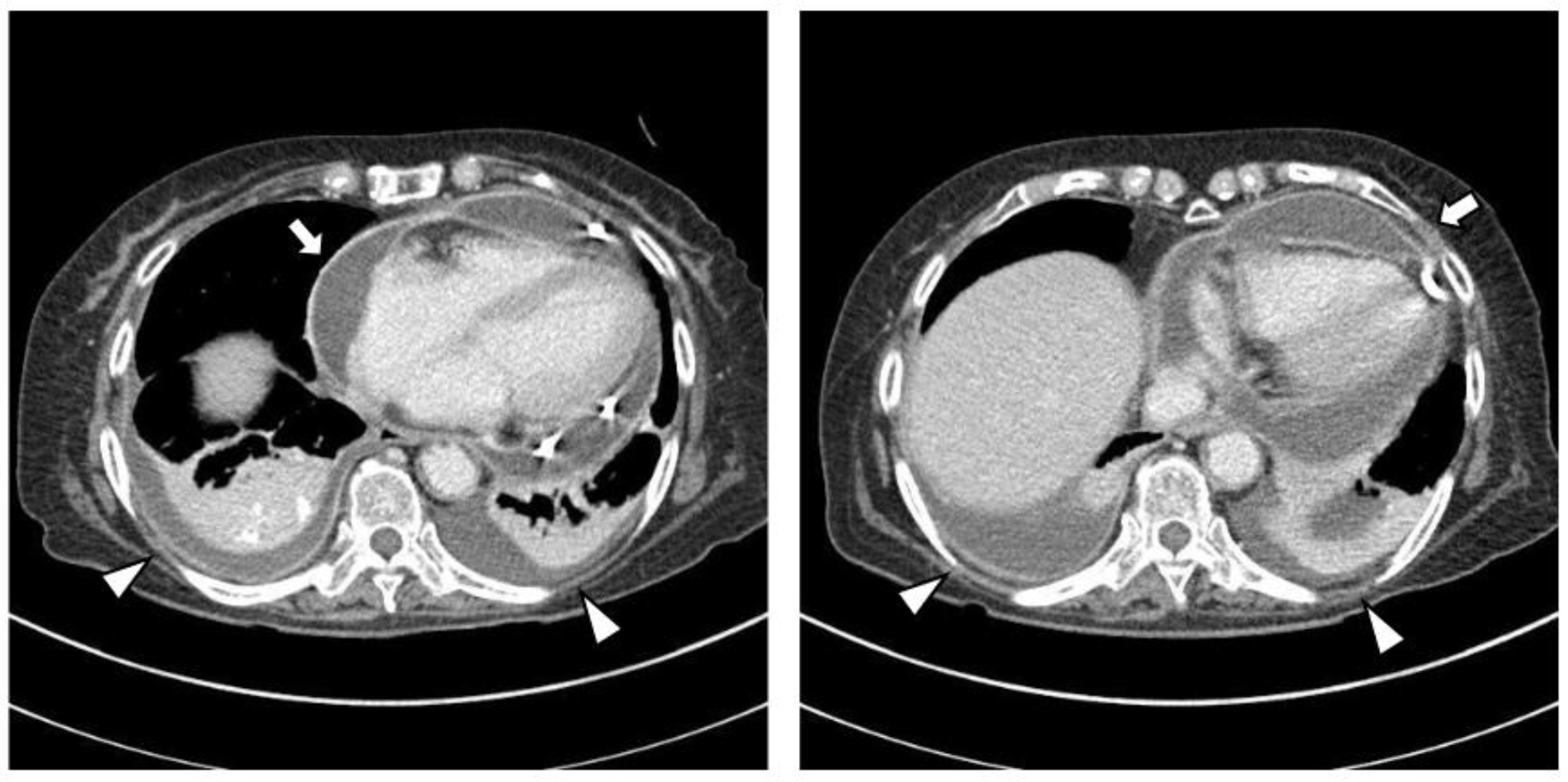
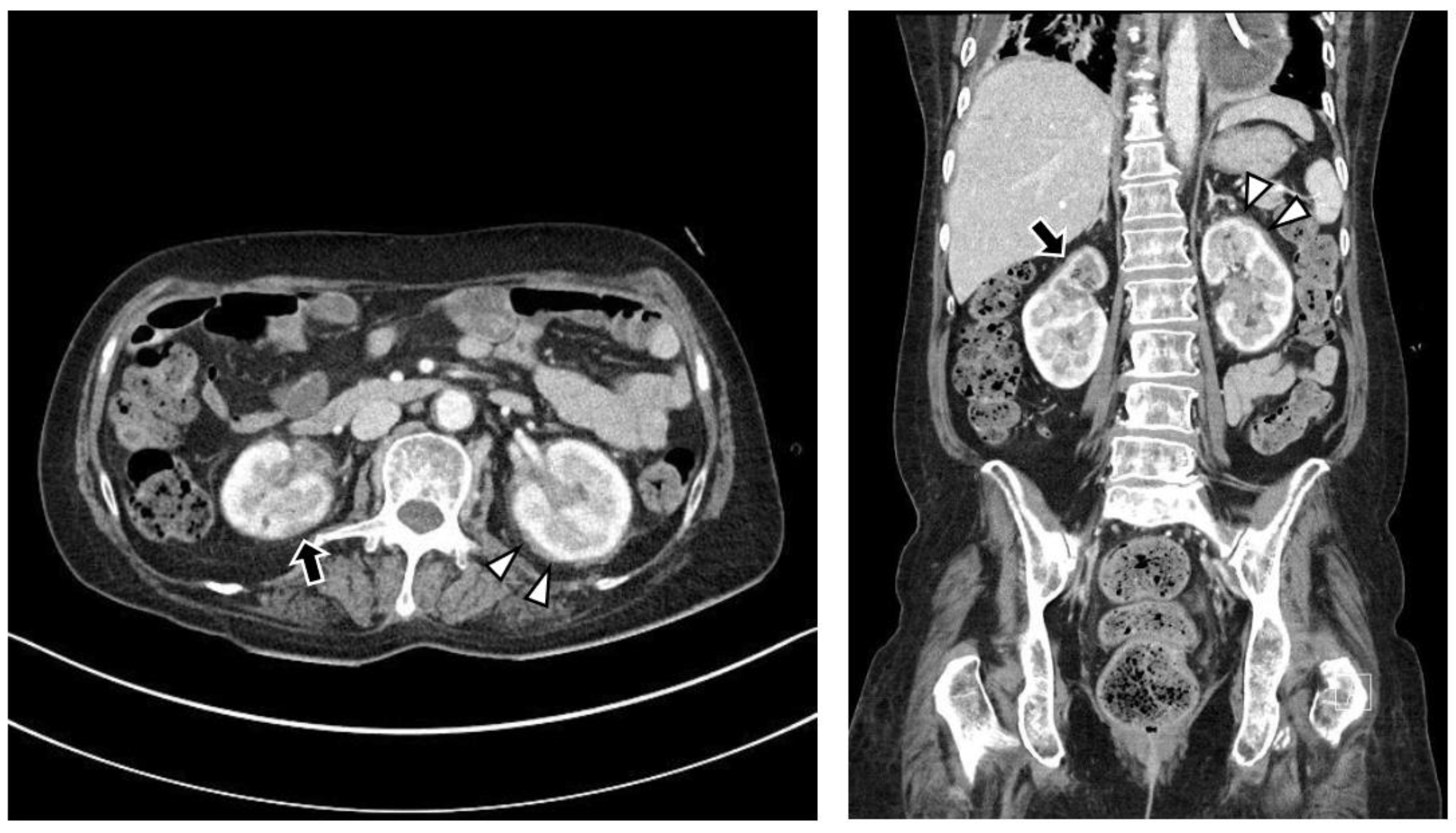
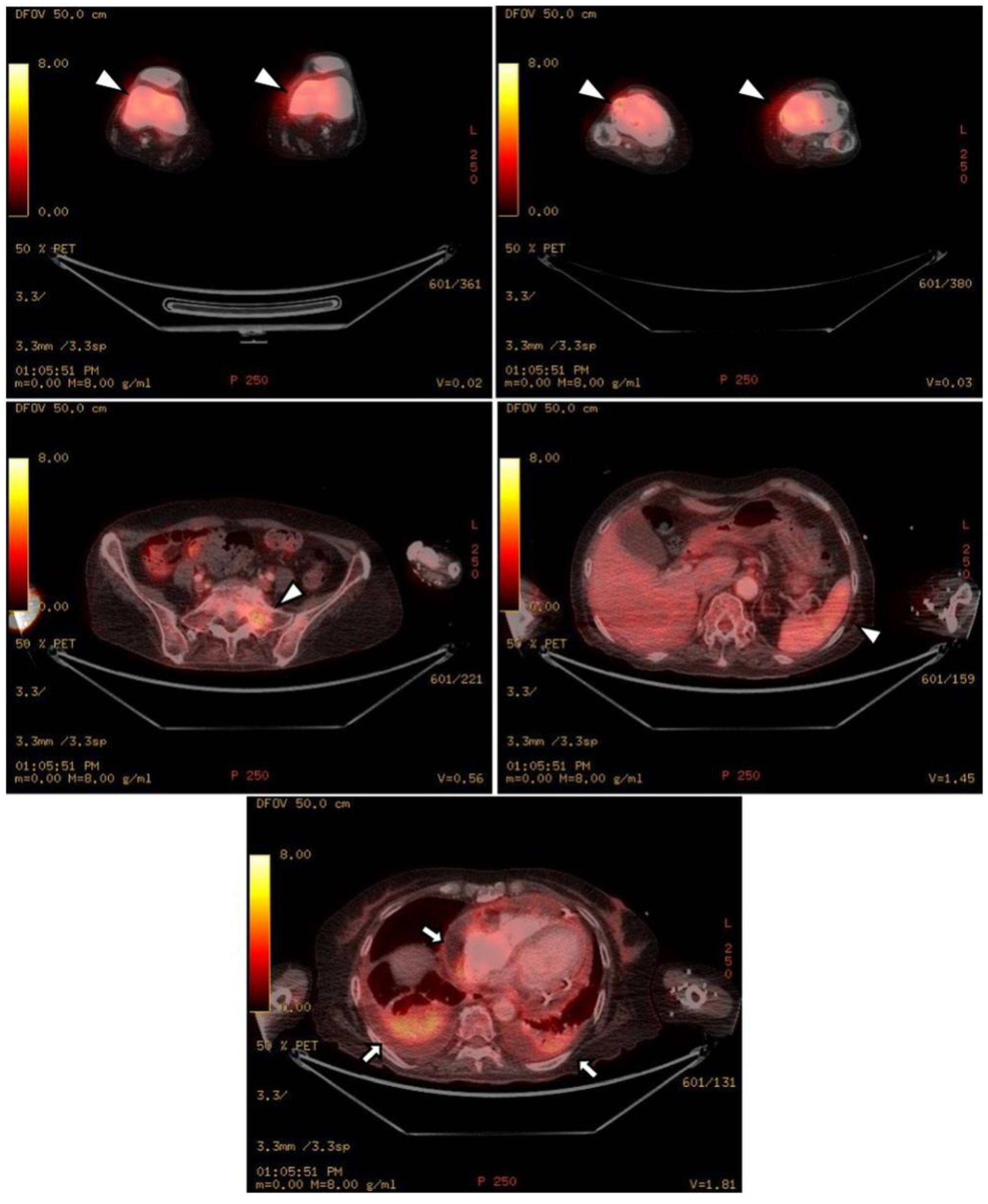
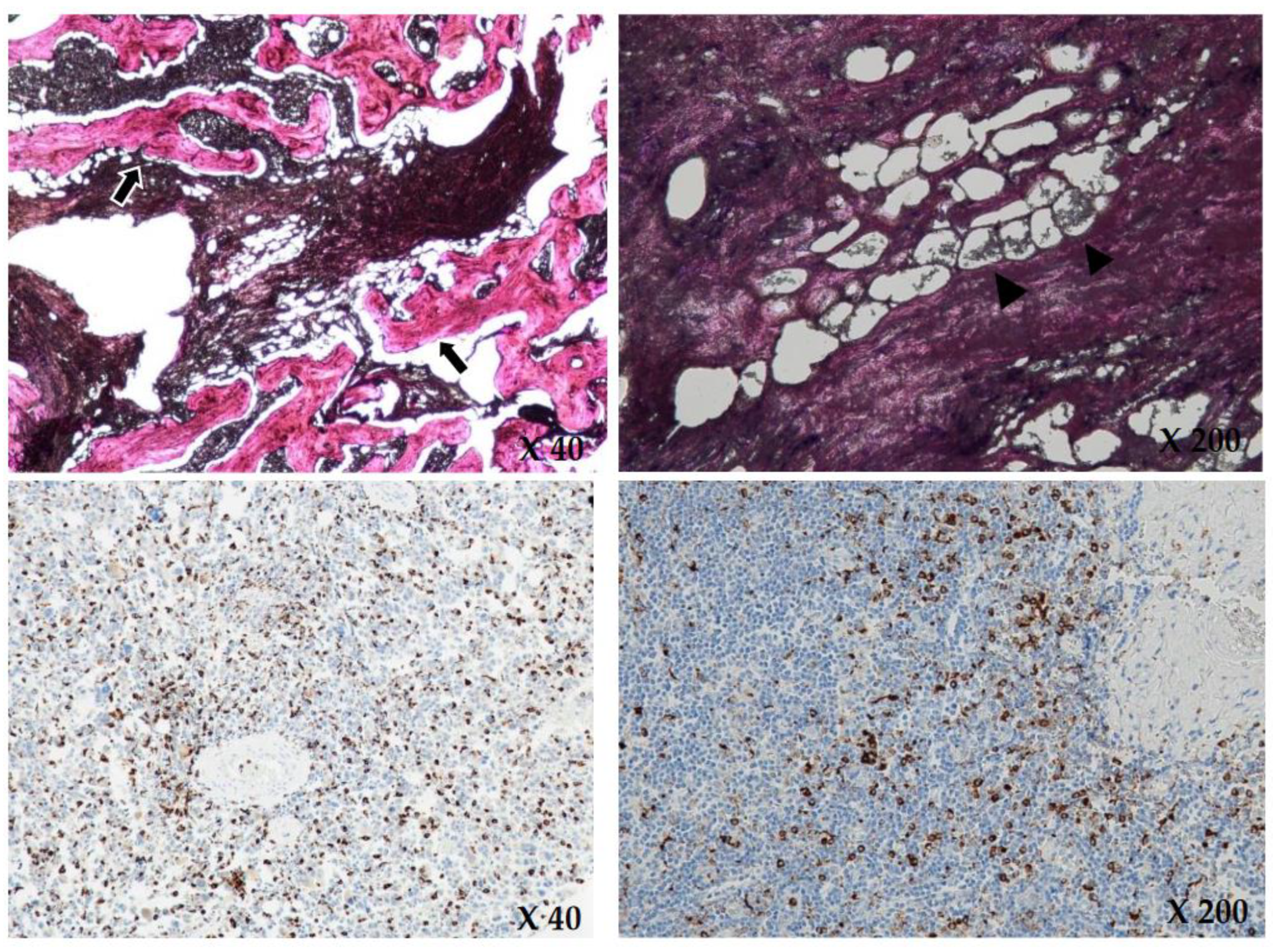
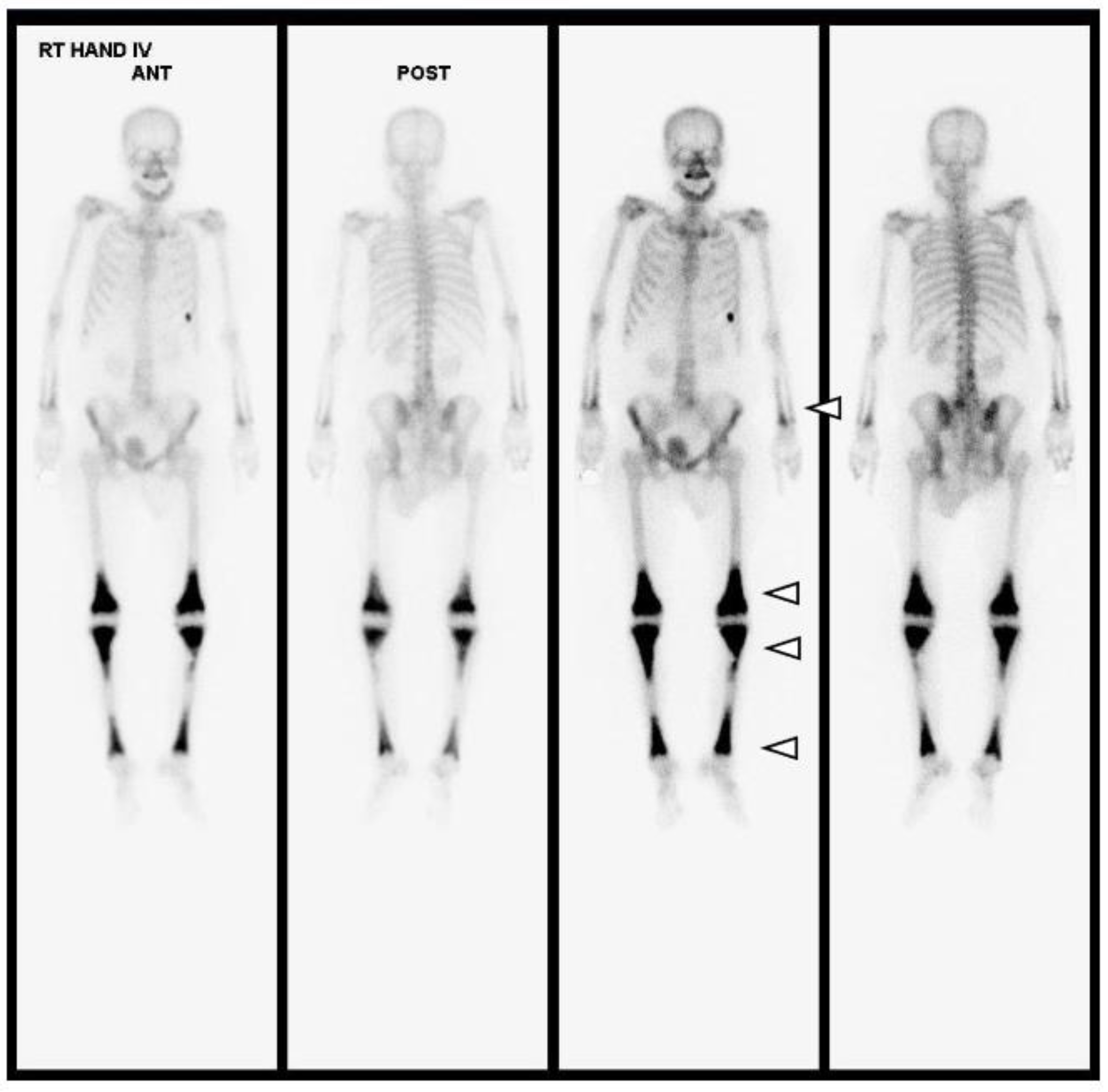
Disclaimer/Publisher’s Note: The statements, opinions and data contained in all publications are solely those of the individual author(s) and contributor(s) and not of MDPI and/or the editor(s). MDPI and/or the editor(s) disclaim responsibility for any injury to people or property resulting from any ideas, methods, instructions or products referred to in the content. |
© 2023 by the authors. Licensee MDPI, Basel, Switzerland. This article is an open access article distributed under the terms and conditions of the Creative Commons Attribution (CC BY) license (https://creativecommons.org/licenses/by/4.0/).
Share and Cite
Joo, Y.B.; Kim, Y.M.; Lee, W.Y.; Lee, K.W.; Chung, H.-J. An Unusual Case of Erdheim Chester Disease (ECD) with Knee Pain: A Case Report. Medicina 2023, 59, 1288. https://doi.org/10.3390/medicina59071288
Joo YB, Kim YM, Lee WY, Lee KW, Chung H-J. An Unusual Case of Erdheim Chester Disease (ECD) with Knee Pain: A Case Report. Medicina. 2023; 59(7):1288. https://doi.org/10.3390/medicina59071288
Chicago/Turabian StyleJoo, Yong Bum, Young Mo Kim, Woo Yong Lee, Kun Woo Lee, and Hyung-Jin Chung. 2023. "An Unusual Case of Erdheim Chester Disease (ECD) with Knee Pain: A Case Report" Medicina 59, no. 7: 1288. https://doi.org/10.3390/medicina59071288
APA StyleJoo, Y. B., Kim, Y. M., Lee, W. Y., Lee, K. W., & Chung, H.-J. (2023). An Unusual Case of Erdheim Chester Disease (ECD) with Knee Pain: A Case Report. Medicina, 59(7), 1288. https://doi.org/10.3390/medicina59071288





